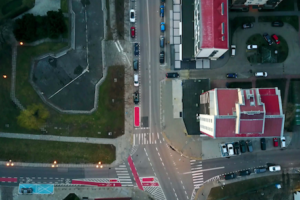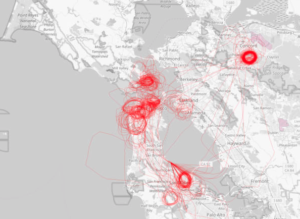
Machine Learning Model Tracks U.S. Spy Planes

Novikov Aleksey/Shutterstock
Among the tasks you can train a computer to perform is scanning the skies over the U.S. for the alarming number of surveillance and spy aircraft.
The news web site BuzzFeed did just that, reporting this week that it employed a machine-learning algorithm to first recognize known spy planes, and then combine that model with a large set of flight-tracking data from a commercial web site.
The AI project mapped thousands of surveillance flights operated by federal agencies over a four-month period, including a military contractor tracking terrorists in Africa that is also flying surveillance aircraft over U.S. cities, BuzzFeed reported.
Reporters-turned-data-scientists started by making calculations describing the flight characteristics of about 20,000 aircraft contained in a database called Flightradar24, including altitude, speed, flight duration and—most important, it emerged—turning rates.
Flightradar24 gathers data from a network of ground-based receivers supplemented by Federal Aviation Administration receivers. The ground radars sweep up a flight data transmitted by aircraft transponders, including unique identifiers for each plane.
The aerial gumshoes then used an algorithm called Random Forest (referred to on Github as randomForest, Random Forests, random-forest and variations of those names). They trained the algorithm, popular among data scientists for its classification capabilities, to spot characteristics of about 100 known FBI and Department of Homeland Security surveillance aircraft, mixed in with about 500 randomly selected aircraft.
(According to a GitHub report, the investigators filtered flight data to remove aircraft registered abroad, commercial aircraft and planes with less than 500 transponder pings.)
The algorithm was then trained to determine which data was most significant. “Given that spy planes tend to fly in tight circles, it put most weight on the planes’ turning rates,” the web site reported.
The trained model classified 69 planes flying over the U.S. as surveillance aircraft. Some turned out to be skydiving operations, but it also spotted surveillance aircraft operated by the U.S. Marshals Service along with military aircraft and surveillance flights operated by military contractors.
In one example tracked down by BuzzFeed, the machine-learning algorithm spotted regular surveillance flights over the San Francisco Bay Area in 2015. A contractor initially told the web site the flights were in support of a marine science project. But journalists noted that most of the surveillance flights were over land. It turned out the sorties over the Bay Area and southern California supported of U.S. Special Operations Command training missions.
The machine-learning exercise also turned up a surprising number of local and state police aerial surveillance operations in Arizona, Florida, southern California and Ohio, the web site reported. It also spotted testing of special operations aircraft based in Ohio but detected flying over other parts of the U.S. The aircraft are reportedly test beds for electronic surveillance equipment.
The results of the machine learning exercise elicited this tweet from former NSA contractor and whistle-blower Edward Snowden: “Credit where it’s due: This was deviously clever.”
Recent items:
Why American Spy Agencies Are Investing in MapD
Is Your Smartphone Spying On You?




























